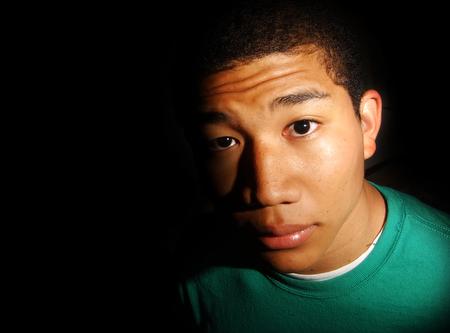University applicants may choose multiple races by 2009

Apr 16, 2007
Last updated on May 12, 2016 at 10:16 a.m.
On the University’s 2007 application for admission, under question 11, there are six choices. Different racial/ethnic designations make up five of the choices, such as “Native American” or “African American,” whereas the sixth choice is “race/ethnicity unknown.”
Of those a student must choose “the ethnicity with which (he or she identifies).”
“I think I decided ‘unknown’ because I hate choosing,” said Phillip Robinson, senior in Engineering. Robinson and other biracial students alike don’t categorize themselves as being able to fit into one certain box.
“I don’t consider myself completely white or completely Asian. If they can’t include everyone then they shouldn’t do it at all,” said Lenna Ostrodka, freshman in ACES.
Get The Daily Illini in your inbox!
The way universities and other educational institutions categorize students’ ethnic and racial identities will change within a few years, according to the proposal submitted by the U.S. Department of Education on Aug. 7, 2006. On universities’ applications for admission, by 2009, students may be able to mark one or more racial and/or ethnic categories.
“This guidance says you can look like anything you happen to look like, and you can say, ‘I identify with (more than one race or ethnicity),'” said Patrick J. Sherrill of the Office of Planning, Evaluation and Policy Development at the Department of Education.
The University is on its way to making the necessary adjustments, according to Associate Provost Keith Marshall.
“There is a group (of administrators) looking into the new categories and what will be involved in incorporating them into our various processes,” Marshall said in an e-mail. “I support the idea that students will be given an opportunity to accurately reflect their racial/ethnic identity as they see it.”
Students and officials recognize that race was an idea created by society. “This is not anthropology. (Race) is a social, political construct,” Sherrill said. “Some people say, ‘If you’re human, you’re human; that’s your race.’ Some of our public comments suggest any classification of people by race is racist.”
Tyson Hawkins, sophomore in LAS, said that he was not sure which category to check, “Asian” or “White,” when he was filling out his application for admission to the University. Half Japanese, part Scandinavian, part Mexican and part “unknown,” Hawkins ended up choosing “Asian.” “I thought it was kind of silly because I thought (picking ‘Asian’) might hurt more than the ‘White’ box,” Hawkins said. “No college is looking for Asians. Asians are not underrepresented in most colleges.”
The Spring 2007 statistical abstract for University enrollment suggests that Asians and Pacific Islanders make up about 12 percent of the total undergraduate population, the second largest category in self-reported ethnic code. No data suggests the number of biracial students that attend the University.
People categorize biracial students, sometimes explicitly, based on how they look.
“It’s still kind of shocking when people I don’t even know ask, ‘What are you?'” Ostrodka said. “(It’s) like they don’t even notice the fact that I’m a person.”
Ostrodka said she has been going through issues of identity since she had to mark her race and/or ethnicity on standardized tests in fourth grade. She also said that her family and friends see her for who she is. “They see me for my personality, my beliefs, things that I’m interested in (and) my passions. They don’t see me first as that ‘crazy biracial girl.'”
Ostrodka said that she does not remember what she checked on the University’s application for admissions, but if there was an “other” category, she would have picked that.
“Personally, I don’t even consider myself biracial,” Ostrodka said. “I consider myself, Lenna, first. Race is … not something that defines me.”





